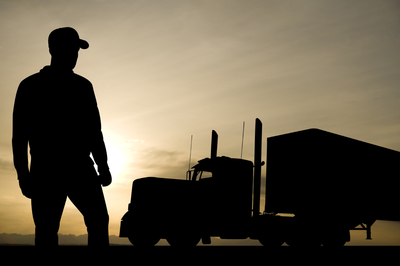Lone worker safety is no longer legally optional
Monday, 12 March, 2012
There is a large loophole in lone worker safety that needs to be addressed quickly by employers to avoid potential future legal liability.
Employers are legally responsible to eliminate any risks to the health and safety of their employees, so far as deemed ‘reasonably practical’. To avoid any confusion, Safe Work Australia has determined that interpretation of ‘reasonably practical’ must take into consideration the following five points:
- The likelihood of the hazard or the risk concerned occurring.
- Degree of harm that might result from the hazard or the risk.
- What the person concerned knows, or ought reasonably to know, about the hazard or risk and any ways of eliminating or minimising the risk.
- Availability and suitability of ways to eliminate or minimise the risk.
- Cost associated with eliminating or minimising the risk, including whether the cost is grossly disproportionate to the risk.
Let’s examine each of those points in relation to those lone workers who use a vehicle-mounted mobile radio in the everyday course of performing their duties: road transport workers, couriers, emergency service workers, local council workers, park rangers, security and broadly lone worker employees part of fleet/communication network.
- The likelihood of the hazard or the risk concerned occurring: The road transport industry has one of the highest injury and fatality rates around the country. However, 80% of severe injuries amongst road transport workers are not sustained while behind the wheel, but are instead occurring outside of the vehicle*. As road transport workers are often lone workers, Work Safe Victoria has identified that poor access to emergency assistance and exposure to violence are the two main hazards of working alone*. In addition, a courier, park ranger or emergency service worker may be at greater risk of incurring injury or fatality, if away from their vehicle and being unable to call for assistance on their vehicle-mounted mobile radio.
- Degree of harm that might result from the hazard or the risk: The degree of harm is either death or severe injury. The average cost per injury claim is estimated to cost Victorian employers $73,000*. This figure, while significant, does not include the larger uncounted cost of lost productivity, lower staff morale and social impacts on employees and their families. Naturally all of these costs are significantly higher when an employee dies on the job.
- What the person concerned knows, or ought reasonably to know, about the hazard or risk and any ways of eliminating or minimising the risk.
- Availability and suitability of ways to eliminate or minimise the risk.
- Cost associated with eliminating or minimising the risk, including whether the cost is grossly disproportionate to the risk.
Lone workers are aware (or should be aware) that when they exit their vehicle fitted with a mobile radio device, they are subsequently unable to communicate their status, are therefore vulnerable and consequently, their safety is placed at greater risk.

It is important to note that lone workers fitted with mobile radio devices in their vehicles often work in areas or circumstances where mobile telephone devices are out of coverage or alternatively, not appropriate for their fleet communication needs. Hence, the mobile radio is often the lone worker’s sole link to their work duties and importantly, their safety. It is unlikely these lone workers would be aware of the ways to eliminate or minimise the risk of being unable to communicate outside of the vehicle, as it will often be the responsibility of the employer to supply these lone workers with the mobile radio technology required to perform their duties.
Employers, on the other hand, have long been aware that the traditional responses to extend mobile radio communication beyond arm’s reach of the vehicle are complicated to install, expensive and may require additional network infrastructure to be built. Unquestionably, Australia’s vast rural areas make it near impossible to provide seamless mobile coverage and considerably more challenging for portable or on-the-person communications. Portable systems in rural areas are expensive, requiring many more base sites, much more spectrum, more linking and increasing ongoing support costs.
Naturally, these traditional responses are not necessarily suitable for a company looking for a cost-efficient way to stay in communication with their fleet. It is for these reasons of impracticality and disproportionate high costs of traditional technology responses that lone workers’ safety has historically been placed at risk and employers have deemed it practically unreasonable to offer lone workers safety communication beyond the vehicle-mounted mobile radio.
These old problems require new solutions and ‘convergence technology’ is said to protect employers against future legal liability. Due to the low cost, ease of use, simplicity of installation and product design, employers can now no longer claim that it is practically unreasonable to provide lone workers with communication outside of the vehicle.
Convergence technology solutions can provide options to directly address lone worker concerns by employees and employers alike. Digital technologies and integrating LMR-based instant push-to-talk applications can deliver a way forward. Out-of-vehicle safety communications for lone and isolated radio users can provide a ‘protective halo and safety bubble’ around the vehicle, ensuring constant contact and instant availability to team and control rooms.
Convergence technology will ‘cut the cord’ and extend user mobility beyond the vehicle while maintaining instant communication to team and control rooms. Lone mobile worker safety is now no longer optional.
*Some statistics and facts reported have been acquired from Safe Work Australia and Work Safe Victoria.
By David Cox, Pacific Wireless Communications
One week on: AT&T's nationwide network outage
Any Australians who found themselves in the United States last week may have experienced a sense...
How MCX continued to evolve in 2023
The year 2023 was one of continuous evolution of the critical communications ecosystem towards...
St John WA selects Omnitronics for ambulance dispatch
St John WA has commenced implementation of the omnicore Enterprise Dispatch system, with the...






